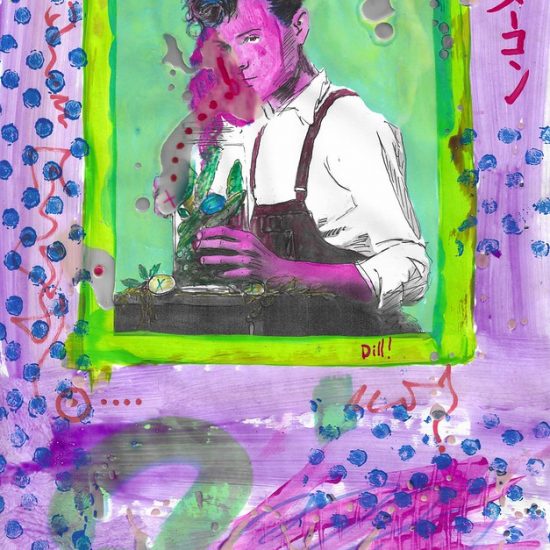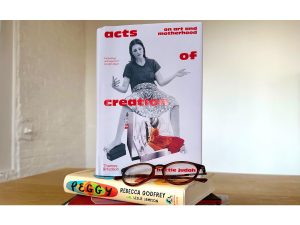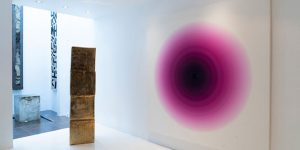Dadaism, an avant-garde movement that emerged in the early 20th century, is renowned for its radical challenge to traditional aesthetics and conventions in art. Originating during World War I in Zürich, Switzerland, Dadaism was a response to the horrors and absurdities of war, reflecting a profound disillusionment with societal norms and the establishment. The movement embraced chaos and irrationality, rejecting the logic and reason that were seen as complicit in the devastation of the war.
Central to Dadaism was its rejection of conventional art forms and the boundaries between different artistic disciplines. The Dadaists sought to dismantle established notions of what art should be, often employing unconventional techniques and materials to create deliberately nonsensical and provocative works. This rebellion against tradition was not just a stylistic choice but a political statement, aiming to disrupt the status quo and prompt a reevaluation of societal values.
The Origins and Influences of Dadaism
The origins of Dadaism can be traced back to the volatile socio-political landscape of early 20th-century Europe. As World War I raged, a group of expatriate artists and intellectuals in Zürich found solace and camaraderie in their shared opposition to the war. This group included figures such as Hugo Ball, Tristan Tzara, and Hans Arp, who collectively founded the Cabaret Voltaire in 1916. The Cabaret Voltaire became a hub for experimental performances, poetry, and art, serving as the birthplace of Dadaism.
Dadaism drew influence from various preceding movements and cultural currents. The absurdist theatre of Alfred Jarry and the anti-art sentiments of Futurism provided a foundation for Dada’s rebellious spirit. Additionally, the movement was shaped by the emerging field of psychoanalysis, with its focus on the unconscious mind and irrationality. This confluence of influences enabled Dadaism to break free from the constraints of traditional artistic expression and explore new, uncharted territories.
Key Figures in the Dada Movement
Several key figures were instrumental in the development and propagation of Dadaism. Hugo Ball, one of the founders, is often credited with establishing the movement’s philosophical underpinnings. His performance of the sound poem “Karawane” at the Cabaret Voltaire epitomized Dada’s embrace of nonsensical language and abstract expression. Ball’s contributions laid the groundwork for the movement’s exploration of language and sound as artistic mediums.
Tristan Tzara, another pivotal figure, was a Romanian poet and performance artist who played a crucial role in spreading Dadaism beyond Zürich. Tzara’s manifestos and writings articulated the movement’s principles, advocating for spontaneity, chance, and anti-establishment sentiments. His charismatic leadership helped galvanize a global network of Dadaists, facilitating the movement’s expansion to cities like Berlin, Paris, and New York.
Dadaism in Visual Arts
Dadaism’s impact on visual arts was profound and far-reaching. The movement’s artists experimented with various media and techniques, often incorporating found objects and everyday materials into their works. Marcel Duchamp, perhaps the most famous Dadaist, revolutionized art with his concept of the “readymade”. His piece “Fountain”, a porcelain urinal signed “R. Mutt”, challenged the very definition of art and remains a seminal work in the history of modern art.

Source: Flickr.com – Marcel Duchamp “Fountain”
Collage and photomontage were also significant techniques within Dadaism, employed by artists like Hannah Höch and Kurt Schwitters. These methods allowed for the juxtaposition of disparate elements, creating visually jarring and thought-provoking compositions. By deconstructing and reassembling images, Dadaists were able to critique contemporary society and its values, highlighting the absurdity and fragmentation of modern life.
Dadaism in Literature and Performance
Dadaism’s influence extended beyond visual arts into literature and performance. The movement’s literary output was characterized by its embrace of absurdity, chance, and spontaneity. Dadaist poetry often eschewed traditional syntax and grammar, instead favoring fragmented and disjointed structures. This approach was exemplified in the works of Tristan Tzara, whose “Dada Manifesto” and other writings embodied the movement’s iconoclastic ethos.
Performance art was another crucial aspect of Dadaism, with events at the Cabaret Voltaire serving as key moments in the movement’s history. These performances were eclectic and unpredictable, incorporating elements of theatre, music, and visual art. Artists like Hugo Ball and Emmy Hennings utilized performance to blur the lines between different artistic disciplines, creating immersive and often chaotic experiences for their audiences. This performative aspect of Dadaism laid the groundwork for later developments in performance art and avant-garde theatre.
The Legacy and Influence of Dadaism
The legacy of Dadaism is evident in numerous subsequent artistic movements and cultural phenomena. Its radical approach to art and its questioning of established norms influenced Surrealism, which emerged in the 1920s and further explored the realms of the unconscious and the irrational. Surrealists like André Breton and Salvador Dalí built upon Dadaist principles, creating dreamlike and fantastical works that continued to challenge conventional aesthetics.
In addition to its impact on Surrealism, Dadaism also foreshadowed later developments in conceptual art, performance art, and postmodernism. The movement’s emphasis on ideas over form, its use of unconventional materials, and its integration of multiple art forms paved the way for future artists to explore new modes of expression. Dadaism’s legacy is also evident in contemporary art practices that continue to challenge and redefine the boundaries of art, reflecting the movement’s enduring influence on the art world.
Conclusion
Dadaism, with its origins in the chaos of World War I, represents a crucial turning point in the history of art. By rejecting traditional aesthetics and embracing irrationality, chance, and spontaneity, the Dadaists sought to disrupt the status quo and provoke a reevaluation of societal values. The movement’s key figures, including Hugo Ball, Tristan Tzara, and Marcel Duchamp, played vital roles in shaping its development and spreading its influence across the globe.
Through its innovative approaches to visual arts, literature, and performance, Dadaism left an indelible mark on the cultural landscape, paving the way for subsequent avant-garde movements and contemporary artistic practices. Its legacy continues to resonate today, reminding us of the power of art to challenge, subvert, and inspire. As we reflect on the history of Dadaism, we recognize its enduring significance as a catalyst for change and a testament to the limitless possibilities of creative expression.
References
- Gale, Matthew. “Dada and Surrealism.” Tate, Tate, www.tate.org.uk/art/art-terms/d/dada.
- Lewer, Debbie. “Dada and Its Legacy.” The Art Story, The Art Story Foundation, www.theartstory.org/movement/dada/.
- Richter, Hans. Dada: Art and Anti-Art. Thames & Hudson, 2004.
- Sanouillet, Michel, and Elmer Peterson, editors. The Dada Reader: A Critical Anthology. University of Chicago Press, 2006.
- “What Is Dada?” Museum of Modern Art, www.moma.org/learn/moma_learning/themes/dada/.
- Featured image: https://flic.kr/p/2q8hUhw




